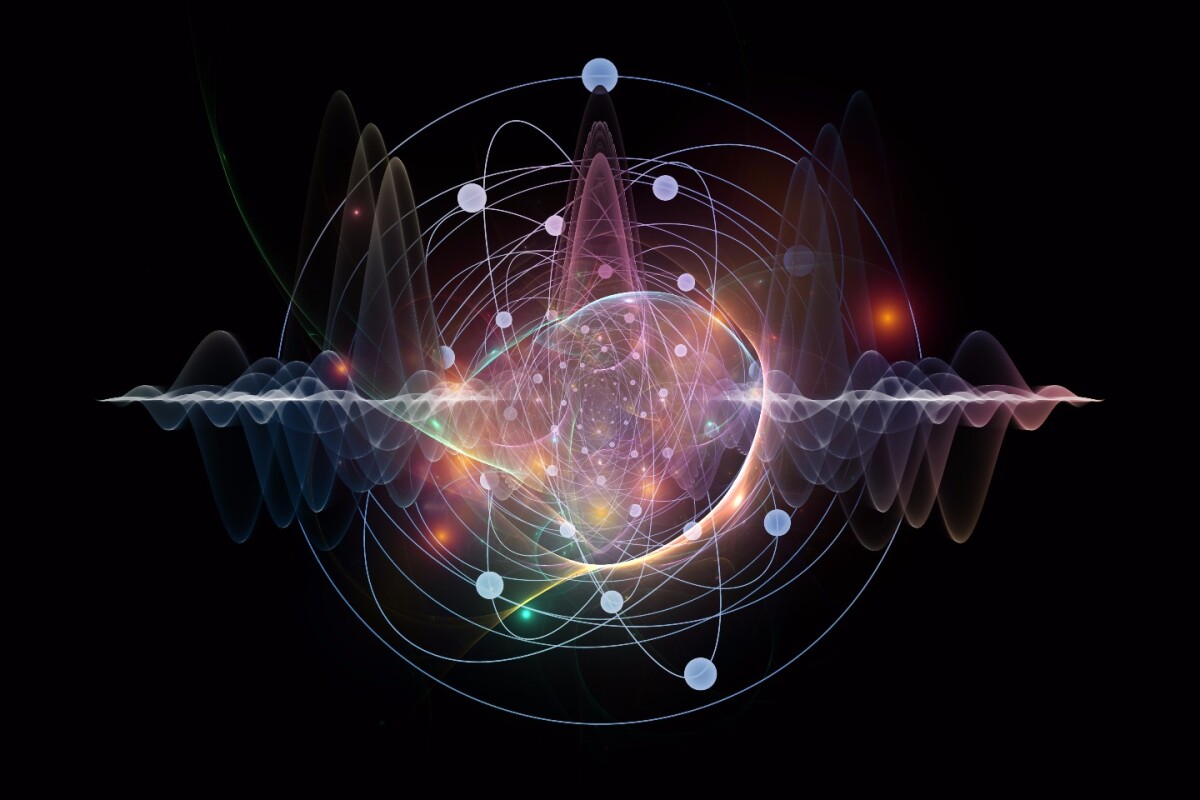
The Unified Field Theory (UFT) stands as one of the most significant endeavors in modern theoretical physics. It aims to describe all fundamental forces and particles within a single, all-encompassing framework. This article explores the historical context, the major components, and the key theories that contribute to the UFT. It will also cover the advancements made in the pursuit of a unified theory, the challenges faced by physicists, and the potential implications of its discovery.
Introduction to Unified Field Theory
The concept of a Unified Field Theory (UFT) proposes that all of the fundamental forces of nature—gravitational, electromagnetic, strong, and weak nuclear forces—are manifestations of a single, underlying field. This ambitious goal is not just to unify the forces but also to explain the relationships between the elementary particles that make up the universe. Since its inception, UFT has sparked intense debates among physicists and has driven some of the most groundbreaking discoveries in science.

At the heart of the quest for UFT is the idea that different forces and particles could be tied together by a singular principle. Early efforts in physics focused on unifying electromagnetism and gravity, which had previously been studied separately. Over time, this vision expanded to include all four known forces. In the 20th century, the development of quantum mechanics and the theory of relativity further accelerated this pursuit, leading to the modern discussions of the UFT.
The Origins of the Unified Field Theory
The origins of the Unified Field Theory can be traced back to the late 19th and early 20th centuries when physicists began to explore the interconnections between the forces. A major milestone in this search came with James Clerk Maxwell’s formulation of electromagnetism, which unified electricity and magnetism into a single theory. However, it was Albert Einstein who took the first step toward the modern conception of UFT. Einstein’s Theory of General Relativity, proposed in 1915, described gravity as the curvature of spacetime. However, General Relativity was limited to the force of gravity and did not incorporate the other fundamental forces.

Einstein’s later work in the 1920s and 1930s was focused on extending his theory to include electromagnetism. He believed that gravity and electromagnetism could be described by a single, unified framework. His early attempts were unsuccessful, but they laid the groundwork for future theories of unification. It is important to note that while Einstein made significant contributions to the idea of a unified field, the full realization of UFT remains an open problem in theoretical physics.
The Four Fundamental Forces of Nature
To understand the Unified Field Theory, it is crucial to first define the four fundamental forces that govern the behavior of particles and matter in the universe:
- Gravitational Force: Gravity is the weakest of the four forces but operates over the longest distances. It is responsible for the attraction between masses and governs the motion of planets, stars, and galaxies. The force of gravity is described by Einstein’s General Theory of Relativity, which shows that massive objects warp spacetime, creating what we perceive as gravity.
- Electromagnetic Force: This force acts between charged particles, like electrons and protons. It governs a wide range of phenomena, from electricity and magnetism to light. Electromagnetic force is described by the theory of quantum electrodynamics (QED), which treats the electromagnetic field as quantized.
- Strong Nuclear Force: This force binds protons and neutrons together in the nucleus of an atom. It is the most powerful of the four fundamental forces but operates over extremely short distances. The strong force is described by quantum chromodynamics (QCD), which explains the behavior of quarks and gluons.
- Weak Nuclear Force: The weak force is responsible for processes like beta decay, where one type of particle transforms into another. It acts over short distances and is weaker than both the strong force and electromagnetism. The weak force is described by the electroweak theory, which unifies it with electromagnetism at high energies.
Each of these forces plays a fundamental role in shaping the structure and behavior of the universe. A Unified Field Theory aims to explain how these forces are interrelated and how they might emerge from a single, underlying field.
The Search for a Unified Theory
The quest for a Unified Field Theory gained significant momentum in the mid-20th century with the advent of quantum mechanics. Quantum mechanics describes the behavior of particles on the smallest scales, while General Relativity explains the gravitational force on large scales. However, these two theories are incompatible in many ways, especially in extreme environments such as black holes or the beginning of the universe.
One of the central challenges of the UFT is reconciling quantum mechanics with General Relativity. While quantum mechanics works excellently at describing the behavior of subatomic particles, General Relativity excels at explaining large-scale phenomena. The forces governed by these two theories, electromagnetism, and gravity, respectively, do not seem to fit together in a unified manner.
In the 1970s, the development of the Standard Model of particle physics brought further advancements in understanding the fundamental forces, with the electromagnetic, weak, and strong forces being successfully unified under this framework. The Standard Model describes the interactions of subatomic particles through exchange particles like photons, W and Z bosons, and gluons. However, the Standard Model does not include gravity, which remains a key piece of the puzzle.
The Role of String Theory
In the 1980s and 1990s, physicists began to explore string theory as a possible candidate for a unified theory. String theory proposes that the fundamental building blocks of the universe are not point-like particles but rather tiny vibrating strings. The vibrations of these strings correspond to different particles. String theory has the potential to unify all four fundamental forces, including gravity, into a single framework.
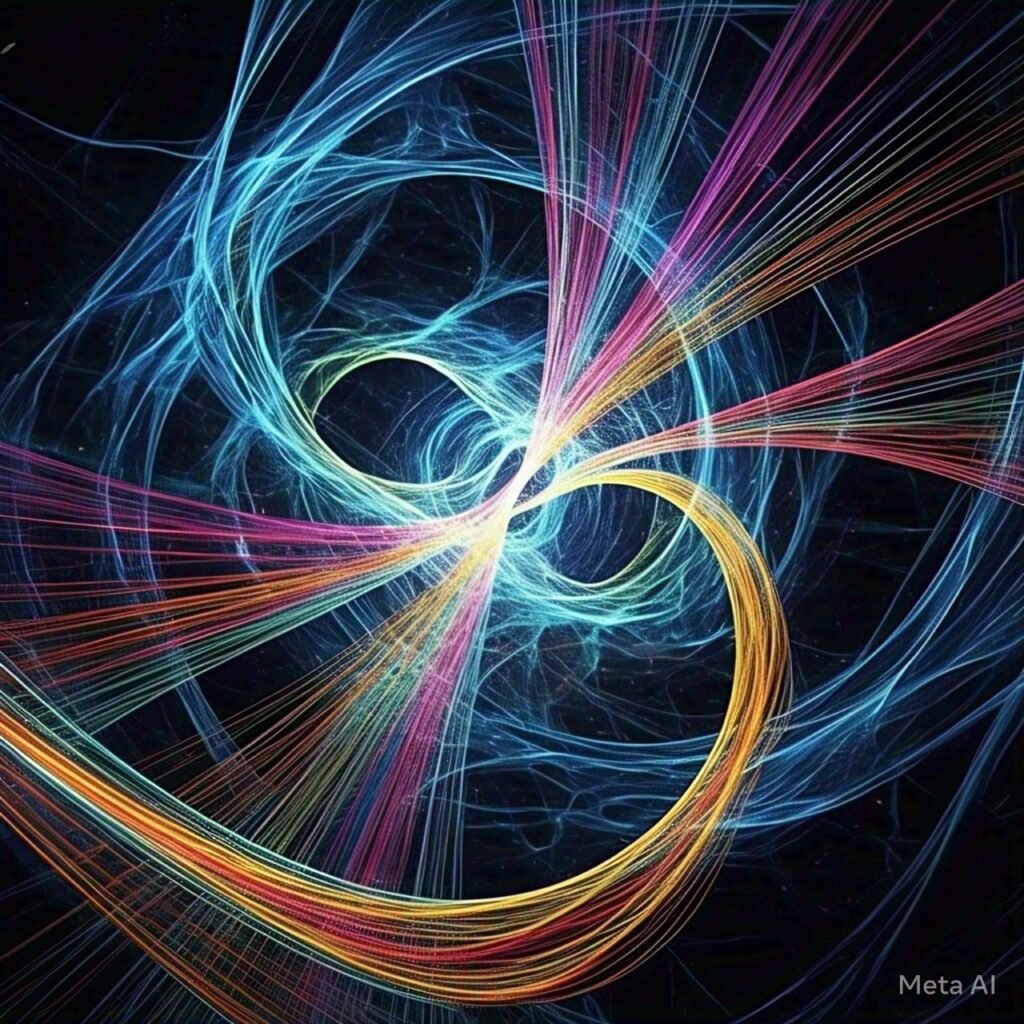
One of the major appeals of string theory is its potential to incorporate quantum gravity—an aspect of General Relativity that has eluded physicists for decades. String theory has been developed in multiple forms, such as Type I, Type II, and heterotic string theories. However, string theory is highly mathematical and has yet to be experimentally verified, leaving many questions about its ultimate validity.
Quantum Gravity and Loop Quantum Gravity
Another promising approach to unification involves quantum gravity. Quantum gravity seeks to reconcile quantum mechanics with the force of gravity, which is currently explained by General Relativity. Loop quantum gravity (LQG) is one of the leading candidates in this field. LQG describes the fabric of spacetime as being composed of discrete loops, and it aims to quantize gravity, offering a potential framework for understanding the quantum nature of gravity.
Unlike string theory, which posits the existence of additional dimensions, loop quantum gravity focuses on the geometry of spacetime itself. LQG has made significant strides in providing a mathematical framework that could describe the quantum properties of gravity. However, like string theory, LQG is still in the early stages of development, and experimental confirmation is lacking.
The Challenges in Developing a Unified Field Theory
The pursuit of a Unified Field Theory faces numerous challenges. One of the most significant obstacles is the lack of experimental data to support the various theoretical approaches. Unlike other fields of physics, such as electromagnetism or thermodynamics, the effects of quantum gravity and string theory are extremely difficult to observe. This makes it challenging to verify the predictions of these theories.
Additionally, the mathematical complexity of these theories poses another hurdle. String theory, for example, requires a vast array of mathematical constructs and tools, some of which have not been fully developed or understood. Similarly, quantum gravity theories often rely on intricate mathematical models that are difficult to interpret and apply in real-world contexts.
Finally, the concept of unification itself is a complex philosophical question. Some physicists argue that the universe may not be inherently unified and that the pursuit of a single, all-encompassing theory might be an impossible goal. Others believe that the continued search for unity could unlock new dimensions of understanding about the fundamental nature of reality.
The Potential Implications of a Unified Field Theory
Should a Unified Field Theory be discovered, it would have profound implications for our understanding of the universe. First, it would unify the four fundamental forces into a single framework, providing a deeper understanding of how the universe works at its most basic level. This could lead to new insights into the nature of space, time, and the origins of the universe itself.
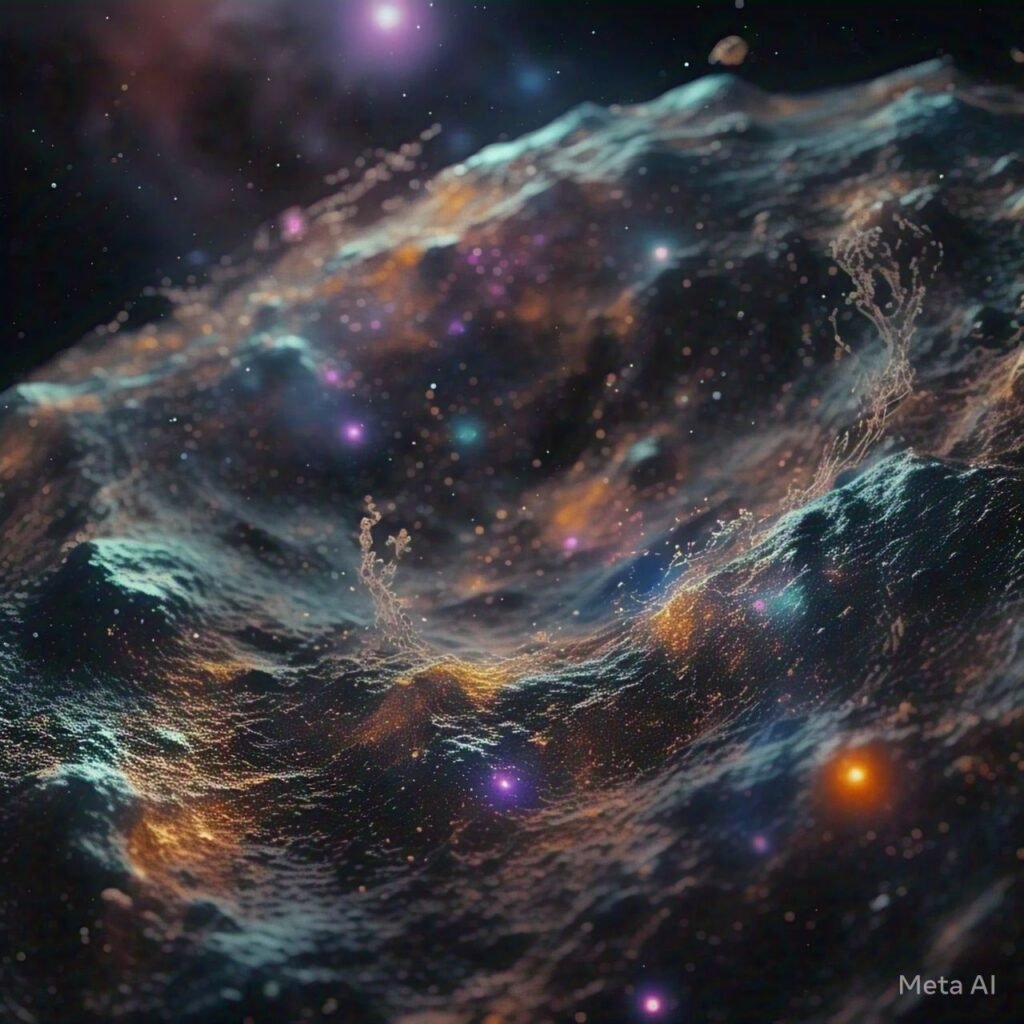
Moreover, a successful UFT could revolutionize technology. If we could understand the fundamental forces more deeply, we might develop new technologies that harness these forces in ways currently unimaginable. For example, control over gravity or a deeper understanding of the strong nuclear force could lead to advances in energy production, transportation, and materials science.
Finally, the discovery of a Unified Field Theory could help answer some of the most profound questions in science, such as the nature of dark matter and dark energy, the behavior of black holes, and the possibility of other dimensions. It could lead to a new era of scientific discovery, reshaping our view of the cosmos and our place within it.
The Role of Symmetry in Unified Field Theory
In the search for a Unified Field Theory, symmetry plays a pivotal role. Symmetry in physics refers to the invariance of physical laws under certain transformations, such as rotations, translations, or reflections. The concept of symmetry has been foundational in understanding the fundamental forces and particles in nature. One of the key ideas behind the unification of forces is the notion that symmetries in nature can lead to the unification of different interactions.
In the Standard Model of particle physics, the electroweak theory, which unifies the electromagnetic and weak forces, is based on the concept of gauge symmetries. These symmetries describe how different forces emerge from a set of underlying mathematical principles. The symmetries of the Standard Model are described by the gauge group SU(3) × SU(2) × U(1), which governs the interactions of quarks, leptons, and gauge bosons.
The search for a Unified Field Theory often involves finding a symmetry group that can incorporate all four fundamental forces into a single, elegant framework. Theories like string theory propose that at high energies, the forces we observe today were once unified under a single symmetry. As the universe cooled, these symmetries broke down, leading to the distinct forces we observe today. The mathematical framework of these symmetries has proven to be essential in constructing potential unified theories, with much of the work in theoretical physics being driven by the quest to identify and understand the symmetries of nature at the most fundamental level.
The Standard Model and Its Limitations
While the Standard Model of particle physics has been incredibly successful in describing three of the four fundamental forces—electromagnetic, weak, and strong nuclear—it has notable limitations. First and foremost, the Standard Model does not include gravity, the force that governs the behavior of massive objects. This omission is a fundamental problem because gravity is one of the most crucial forces governing the large-scale structure of the universe.
The Standard Model also leaves unanswered questions about dark matter, dark energy, and the origin of mass. These are important mysteries that need to be addressed for a more complete theory of everything. The Higgs mechanism, which was experimentally confirmed in 2012 with the discovery of the Higgs boson, provides an explanation for the origin of mass, but many questions about how mass and other properties emerge remain unresolved.
Furthermore, the Standard Model does not account for the quantum nature of gravity. Gravity is described by Einstein’s General Relativity as the curvature of spacetime, but this description does not incorporate quantum mechanics, which is essential for understanding the behavior of particles at the smallest scales. The inability to merge quantum mechanics with General Relativity is a key issue in the search for a Unified Field Theory, and addressing this challenge is a critical step toward unifying all the forces of nature.
Quantum Mechanics and Its Relevance to Unified Field Theory
Quantum mechanics has revolutionized our understanding of the microscopic world. It describes the behavior of particles at the subatomic scale, where the classical laws of physics break down. In quantum mechanics, particles are not described as distinct objects but rather as probabilities that exist in a superposition of states until measured.

Quantum mechanics plays a central role in the search for a Unified Field Theory because it offers a framework that could potentially describe all forces, including gravity. In quantum field theory (QFT), particles are viewed as excitations of underlying quantum fields. This theory has been successful in explaining the electromagnetic, weak, and strong forces within the framework of quantum mechanics, where particles such as photons, W and Z bosons, and gluons mediate the respective interactions.
However, the inclusion of gravity in quantum mechanics remains a major challenge. The gravitational force, as described by General Relativity, is a classical theory that does not fit well with the principles of quantum mechanics. The search for a quantum theory of gravity is thus an essential step in unifying the forces of nature. Various approaches, such as string theory and loop quantum gravity, aim to achieve this by describing the gravitational field in quantum mechanical terms, but these theories have yet to be fully reconciled with experimental data.
The Problem of Quantum Gravity
The problem of quantum gravity is one of the central obstacles in the search for a Unified Field Theory. General Relativity treats gravity as the curvature of spacetime caused by massive objects, while quantum mechanics describes forces in terms of quantized fields. The two theories work beautifully in their respective domains, but they are fundamentally incompatible at the quantum level.
At very small scales, such as those near the Planck length (around 10^-35 meters), quantum effects are expected to become significant, and gravity must also be treated quantum mechanically. However, when scientists try to combine the principles of quantum mechanics with General Relativity, the result is often a highly complex and mathematically inconsistent theory.
One of the key challenges in formulating a quantum theory of gravity is the fact that, unlike the other forces, gravity is a weak force that is difficult to observe in quantum experiments. Additionally, the quantum description of gravity may involve unknown aspects of spacetime itself, such as the possibility of discrete spacetime, which complicates the problem further. Despite these difficulties, theorists continue to explore various frameworks, including string theory and loop quantum gravity, to find a quantum description of gravity that would allow for the unification of all forces.
The Role of Higher Dimensions in Unification
One of the fascinating aspects of string theory and other unified theories is the idea that the universe may have more than the familiar three spatial dimensions and one time dimension. Many unified field theories suggest that additional dimensions may exist beyond those we perceive in our everyday experience.
String theory, for example, postulates that the fundamental particles we observe are not point-like objects but rather tiny, vibrating strings. These strings exist in a multi-dimensional space, which could include up to 11 dimensions, according to M-theory, a leading extension of string theory. While we cannot directly observe these extra dimensions, their existence is thought to influence the fundamental forces and particles we observe.
The existence of higher dimensions could offer the key to unifying the forces. In string theory, for example, the extra dimensions are theorized to be compactified—curled up so tightly that they are imperceptible at macroscopic scales. These extra dimensions could provide the necessary framework to unify the different forces of nature by allowing the forces to manifest in different ways depending on the energy scale or spatial dimensions involved.
The idea of higher dimensions has been met with skepticism, primarily because they cannot be observed directly in experiments. However, some researchers are optimistic that future technological advancements could make it possible to detect the effects of extra dimensions, providing experimental evidence for these theories.
The Role of Particle Accelerators in Testing Unified Theories
Particle accelerators have played a crucial role in testing the predictions of theoretical physics and advancing our understanding of the fundamental forces. These machines accelerate particles to extremely high speeds and smash them together, allowing scientists to observe the interactions that occur at subatomic scales. The data gathered from these experiments provide valuable insights into the properties of matter and energy, and help test the validity of theories like the Standard Model and its extensions.
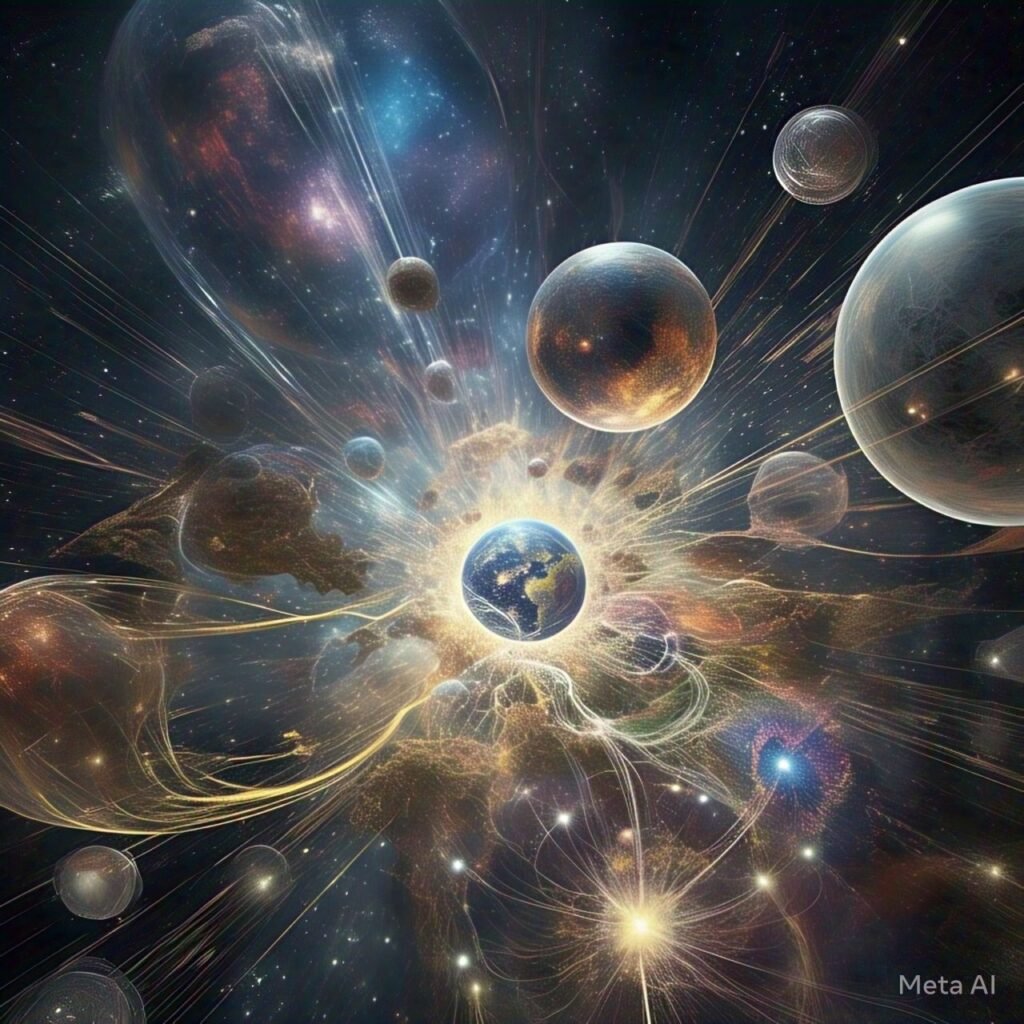
For the search for a Unified Field Theory, particle accelerators like the Large Hadron Collider (LHC) are crucial tools. The LHC has already made significant contributions to our understanding of particle physics, including the discovery of the Higgs boson, which confirmed the mechanism by which particles acquire mass. However, many of the questions related to unification remain unanswered, and new experimental results are necessary to verify or refute the various unified theories being proposed.
In particular, particle accelerators could provide insights into the existence of new particles, such as supersymmetric particles, which are predicted by theories like supersymmetry. The detection of such particles would offer strong evidence in favor of certain unified theories and help guide the next steps in the search for a complete theory of everything. Additionally, experiments that probe the nature of dark matter and dark energy, such as those conducted at the LHC or in other future facilities, may reveal important clues about the true nature of the forces in the universe.
The Future of Unified Field Theory
While the pursuit of a Unified Field Theory remains one of the most daunting challenges in physics, significant progress continues to be made. Theoretical physicists are developing new ideas and frameworks that offer promising paths toward unification, including the exploration of higher dimensions, quantum gravity, and string theory.
The future of UFT depends not only on theoretical breakthroughs but also on experimental advancements. With improved technologies, such as more powerful particle accelerators, detectors, and telescopes, scientists will be able to test the predictions of these theories with greater precision. Moreover, new insights into cosmology, astrophysics, and quantum mechanics may shed light on the deepest questions regarding the fundamental forces and the structure of the universe.
The journey toward a Unified Field Theory is far from over, but the pursuit remains one of the most exciting and profound quests in the history of science. Whether the theory will be fully realized in the near future or whether new, unforeseen concepts will emerge, the search for a unified description of the universe will undoubtedly continue to shape the course of physics in the coming decades.
The Challenge of Experimental Verification for Unified Theories
One of the most significant challenges in the pursuit of a Unified Field Theory is the difficulty of experimentally verifying the predictions of these complex, high-energy models. Unlike many theories in physics, the unified theories that attempt to describe all four fundamental forces require conditions that are far beyond what current technology can simulate or observe. These theories often predict phenomena that only occur at energy scales or distances that are currently unreachable with existing experimental tools.
For instance, string theory predicts the existence of extra spatial dimensions, but these dimensions are compactified—meaning they are curled up so small that they are effectively invisible to current experimental apparatus. Similarly, the high-energy regime where the forces might unify is typically found at energy scales far above what we can access with particle accelerators today. The energies required to test these theories might be many orders of magnitude greater than what we can currently achieve.

The Large Hadron Collider (LHC), the most powerful particle accelerator in the world, is one of the few tools that can probe such high-energy phenomena. It has already made significant contributions to our understanding of the Standard Model, such as the discovery of the Higgs boson. However, the energies required to probe phenomena such as supersymmetry, extra dimensions, or quantum gravity remain out of reach for the LHC. In this context, new experimental approaches or future particle accelerators, potentially capable of reaching higher energy levels, will be critical for advancing the search for a Unified Field Theory.
Another challenge is the verification of abstract mathematical predictions. Many of the unification models rely on extremely complex mathematical structures that may not be directly observable through conventional experiments. For example, string theory’s predictions about the nature of spacetime, the existence of extra dimensions, and the behavior of fundamental particles are often expressed in terms of highly abstract mathematical frameworks. To bridge the gap between theory and experiment, physicists need to devise novel ways to test these abstract predictions—perhaps through indirect evidence or by finding observable phenomena that could confirm or refute certain aspects of the theories.
The Influence of Quantum Field Theory on Unified Theories
Quantum Field Theory (QFT) has been immensely influential in the development of theories of unification. QFT describes how particles interact with one another through the exchange of force-carrying particles, or bosons. The framework has been essential in developing our understanding of three of the four known fundamental forces—electromagnetic, weak nuclear, and strong nuclear—by describing how particles interact at quantum scales.
In the context of a Unified Field Theory, QFT provides a natural language for describing how these forces may emerge from a more fundamental, unified interaction at high energies. For example, the electroweak theory, which successfully unified the electromagnetic and weak nuclear forces, was formulated using the principles of quantum field theory. In this framework, the photon and the W and Z bosons are treated as excitations of their respective quantum fields, and the unification of the electromagnetic and weak forces was described as a process driven by symmetries in the underlying quantum fields.

Theories like Grand Unified Theory (GUT) and string theory build on the foundation of QFT, extending it to include new symmetries and particles. GUTs, for example, propose that at very high energy scales, the strong, weak, and electromagnetic forces merge into a single, unified force. This process of unification can be described mathematically through the framework of QFT, but with new symmetries and quantum fields added to incorporate the previously separate forces into one unified structure.
Additionally, QFT provides the framework to explore quantum gravity in a consistent way. In the standard QFT approach, the gravitational force has been difficult to reconcile because, unlike other forces, it is not quantized in the same manner. However, proposals such as quantum gravity and loop quantum gravity are attempts to treat gravity as a quantum field and include it within the broader quantum framework of Unified Field Theory.
Supersymmetry: A Key Player in the Search for Unification
Supersymmetry (SUSY) is one of the most promising theoretical concepts in the pursuit of a Unified Field Theory. Supersymmetry proposes a relationship between the two basic types of particles in nature: bosons (particles that carry forces) and fermions (particles that make up matter). According to SUSY, for every known particle, there should exist a corresponding superpartner with different properties. For example, the photon, which is a boson, would have a superpartner called the photino, which is a fermion.
The concept of supersymmetry provides a framework that could help unify the forces in several important ways. For one, SUSY can naturally stabilize the Higgs boson mass, addressing a major problem in the Standard Model known as the hierarchy problem, which involves large discrepancies between the gravitational and weak force scales. Additionally, supersymmetry can help explain the existence of dark matter, as many supersymmetric particles, such as the neutralino, are candidates for dark matter.
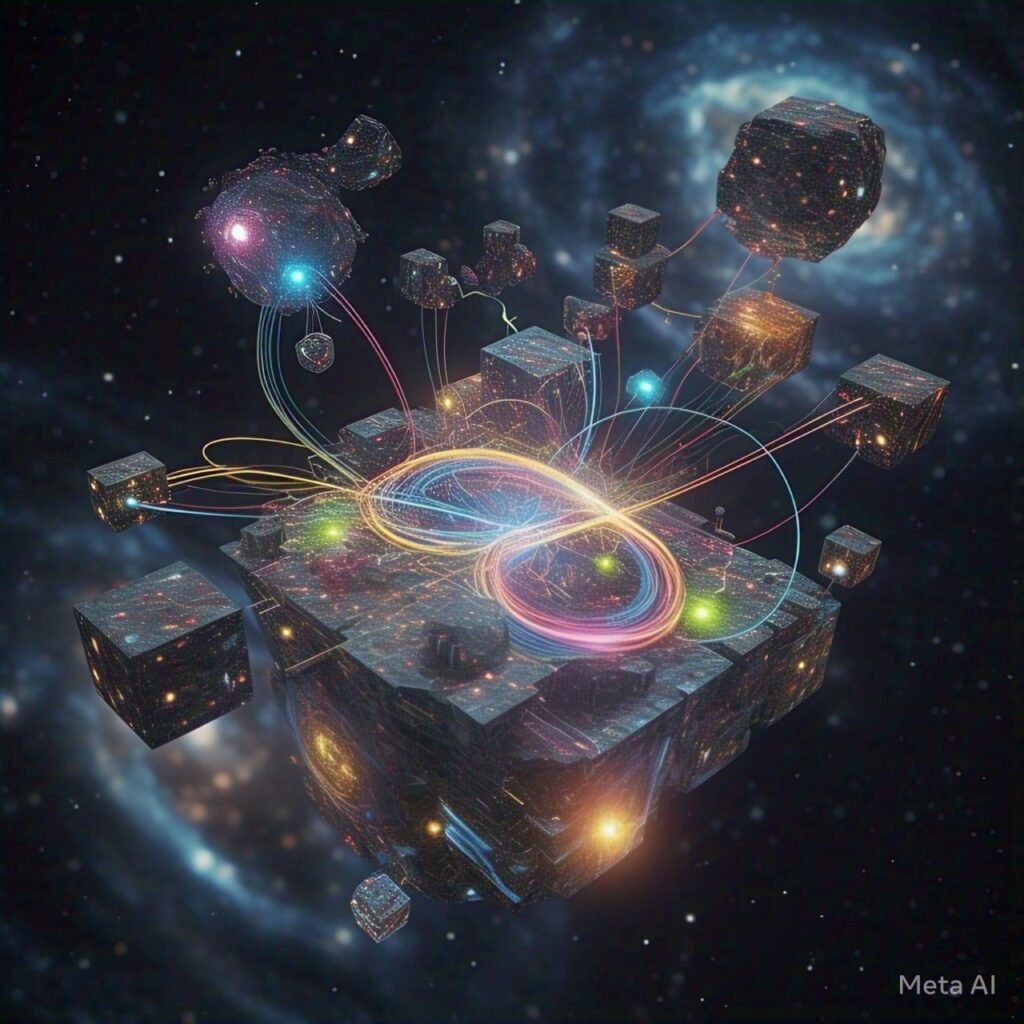
Supersymmetry also plays a crucial role in string theory. In fact, string theory’s extension into supersymmetric string theory, known as superstring theory, has been an essential part of efforts to achieve a Unified Field Theory. Superstring theory describes fundamental particles as one-dimensional strings vibrating at different frequencies, with the supersymmetry between bosons and fermions playing an important role in the mathematical formulation of the theory.
However, one of the main challenges with supersymmetry is that no supersymmetric particles have yet been discovered. Experimental searches at the Large Hadron Collider and other particle accelerators have failed to detect any direct evidence of supersymmetric particles. This does not rule out the theory, but it does pose a significant challenge for its validity. If supersymmetry does exist, it might be realized at energy scales that are currently beyond our experimental reach, or the superpartners might be more elusive than expected.
String Theory and Its Role in Unification
String theory is arguably the most ambitious and well-known framework attempting to achieve a Unified Field Theory. Unlike the Standard Model, which treats particles as point-like objects, string theory proposes that all particles are actually tiny, vibrating strings. These strings can vibrate in different modes, and their vibrations correspond to different particles in the Standard Model.
The beauty of string theory lies in its potential to unify all the fundamental forces, including gravity, in a single framework. One of the central features of string theory is its reliance on higher-dimensional spaces. In its simplest form, string theory requires the existence of at least 10 dimensions—9 of space and 1 of time—although more advanced versions, such as M-theory, suggest the existence of 11 dimensions. These extra dimensions could provide the key to unifying the forces, as they offer a way to incorporate gravity alongside the three other forces (electromagnetic, weak, and strong nuclear) in a consistent manner.
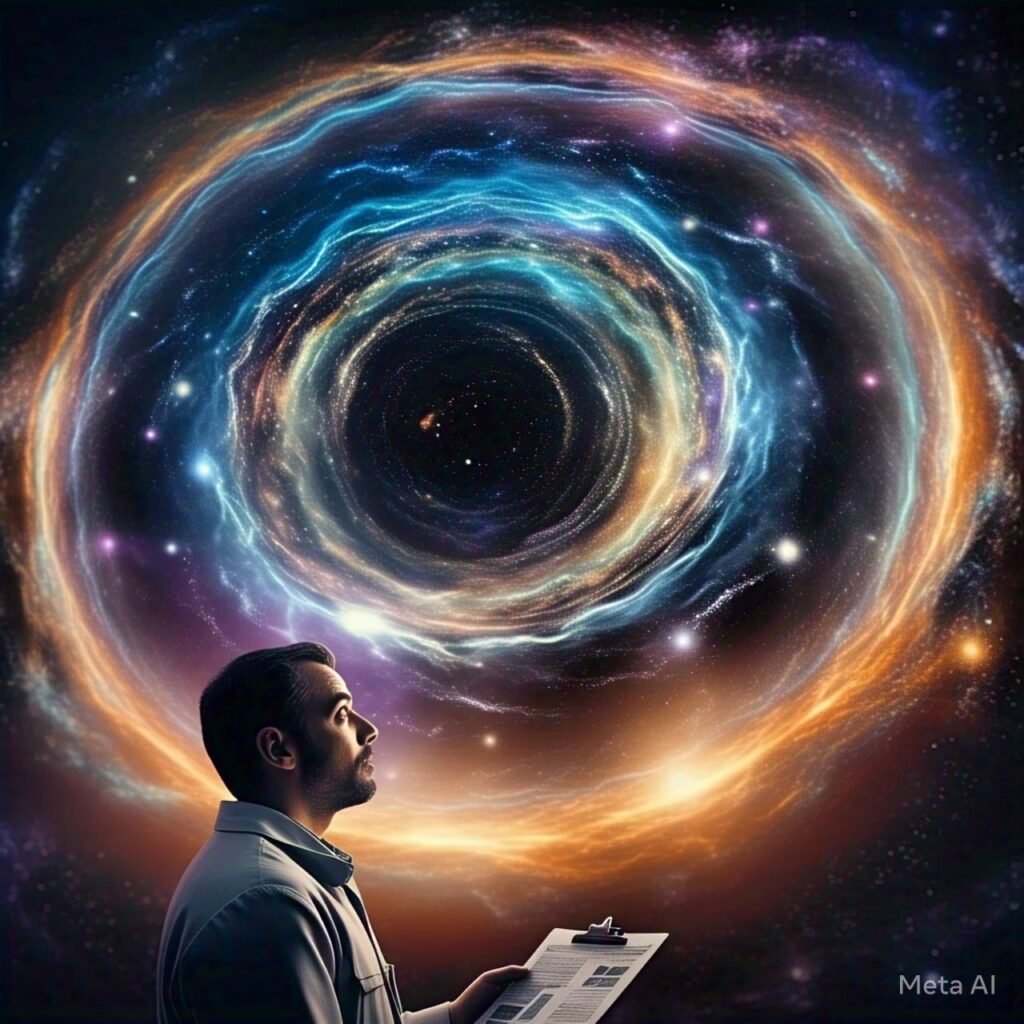
String theory also predicts the existence of additional particles, such as gravitons, which would mediate the gravitational force. In this sense, string theory could provide a quantum mechanical description of gravity, potentially leading to the long-sought-after theory of quantum gravity. However, the theory is not without its criticisms. For one, string theory is extremely complex, with many possible solutions that are difficult to test. Additionally, the extra dimensions predicted by string theory are compactified, meaning they are too small to detect directly with current technology.
Despite these challenges, string theory remains one of the leading candidates for unifying all the forces of nature. In addition to its mathematical elegance, it provides a framework that can potentially describe the quantum nature of gravity. However, whether string theory will ultimately provide the ultimate Unified Field Theory remains to be seen. As with many other unified models, the theory’s experimental verification presents significant obstacles, and much of its potential remains speculative at this point.
The Concept of Quantum Foam and Spacetime at Small Scales
One of the most intriguing aspects of the quest for a Unified Field Theory is the exploration of the fabric of spacetime itself. According to the theory of General Relativity, spacetime is a smooth, continuous structure that can be warped by the presence of mass and energy. However, at the quantum level, spacetime is believed to have a discrete, “foamy” structure. This idea, known as quantum foam, was proposed by physicist John Wheeler in the 1950s and suggests that at extremely small scales (on the order of the Planck length, around 10−3510^{-35}10−35 meters), spacetime is not smooth but instead exhibits chaotic fluctuations.
These quantum fluctuations could have profound implications for the development of a Unified Field Theory. If spacetime is indeed foamy at the smallest scales, then the smooth spacetime geometry described by General Relativity would only be an approximation at larger scales. The quantum nature of spacetime could give rise to new phenomena, such as spacetime “holes” or fluctuations that might affect the propagation of forces like gravity.

In the context of quantum gravity, theories such as loop quantum gravity aim to describe these quantum properties of spacetime by quantizing the geometry of spacetime itself. This approach contrasts with string theory, which views spacetime as arising from the vibrations of strings. Nevertheless, both approaches share the goal of reconciling General Relativity and quantum mechanics, and both seek to understand the true nature of spacetime at the smallest scales.
The concept of quantum foam is still speculative, and experimental evidence for it is limited. However, its inclusion in the search for a Unified Field Theory highlights the importance of understanding not just the forces themselves but the very fabric of the universe in which those forces operate. As technology advances and we probe deeper into the mysteries of the quantum world, we may begin to uncover the truth about spacetime and its role in unification.
The Future of Unified Field Theory Research
The search for a Unified Field Theory is likely to continue to shape the future of theoretical physics for many years to come. As our understanding of quantum mechanics, gravity, and the fundamental forces deepens, we may find new avenues for unification that we cannot yet imagine. The advancement of experimental technologies—such as more powerful particle accelerators, advanced space telescopes, and quantum computers—could eventually provide the experimental evidence needed to test the predictions of unified theories.
Moreover, as our understanding of cosmology, quantum mechanics, and high-energy physics evolves, new insights into the nature of dark matter, dark energy, and the early universe may provide crucial clues for developing a Unified Field Theory. Whether we will ever succeed in finding a complete and final theory remains an open question, but the pursuit of such a theory remains one of the most exciting and profound endeavors in modern science.
As researchers continue to explore and refine the existing theoretical models, new approaches may emerge, leading us closer to an understanding of the deepest workings of nature. The journey toward unification is ongoing, and it is possible that, in the future, humanity will achieve a deeper, more unified understanding of the universe than ever before.
Conclusion
The search for a Unified Field Theory (UFT) is perhaps the most deep and ambitious enterprise in the history of physics. From Einstein’s early idea of a unification of gravity with electromagnetism to today’s research on string theory and quantum gravity, the search for a theory that can gracefully unify the forces of nature has intrigued the greatest minds of the world’s physicists for more than a century. While much ground has been gained, we remain to be certain of the last, overarching theory that reconciles the behavior of the universe in both the quantum and cosmological realms.
Centered at the core of this challenge is the inherent tension between two pillars of contemporary physics—General Relativity and Quantum Mechanics. General Relativity has given a brilliant account of gravity and large-scale cosmic events, ranging from black holes to the evolution of the universe. In contrast, Quantum Mechanics has changed our comprehension of subatomic particles and the probabilistic nature of the microcosm. The challenge comes in combining these two theories since their mathematical formalisms are in conflict when extended to extremes like black holes or at the Planck scale when gravity and quantum mechanics are strong.

The leading candidates for a Unified Field Theory—like String Theory, Supersymmetry, and Loop Quantum Gravity—have exciting new ideas. String Theory, more specifically, presents a daring platform that not only has the prospect of unifying all forces, including gravity, but also propounds a multiverse, with many different universes potentially existing side by side with their own unique laws of physics. Nonetheless, these ideas remain very much theoretical, dependent on experimental testing that remains maddeningly just beyond reach from technology. With the technology at hand, including the Large Hadron Collider, we are still far from exploring the energies that are extreme enough to experimentally test these ideas directly.
The experimental verification stumbling block stands tall, as a lot of the phenomena these theories predict, including the existence of extra dimensions or supersymmetric particles, are likely to occur at energy scales well beyond our current reach. The quest for evidence of these new phenomena in experiments remains a basic challenge, and advances in experimental equipment as well as in conceptual knowledge are needed to get closer to a unified theory. Moreover, as our knowledge of cosmology becomes more profound—particularly regarding phenomena such as dark matter, dark energy, and the early universe—the potential for new insights that can lead us toward a more comprehensive theory grows.

In spite of the difficulties, the quest for a Unified Field Theory is the main objective of contemporary physics due to its ability to provide answers to some of the universe’s most fundamental questions. What is the real nature of space-time? How are all the forces and particles we see derived from one, underlying entity? What are the fundamental principles that guide the universe at every scale, from the tiniest quantum particles to the grandest structures of the cosmos? These are not abstract questions; they are questions that speak to the very greatest human desire to comprehend the texture of reality itself.
As we press further into the realms of theoretical physics, the path to unification will certainly be filled with surprising revelations—whether or not we eventually discover the fabled Unified Field Theory. Every step forward, whether to new mathematical theory, improved experiment, or more profound philosophical understanding, draws us closer to grasping the real mechanisms of the universe. Finally, the Unified Field Theory, should it be found, would not only solve the century-old questions of physics, but could potentially lead to new dimensions of scientific investigation, providing revolutionary new understanding of the nature of everything.
In this grand journey, the pursuit of unification is as much about the process of discovery as it is about the answers themselves. The questions of “why” and “how” remain at the heart of humanity’s exploration of the cosmos. While the end of this journey remains elusive, each discovery serves as a testament to the resilience of human curiosity and the unyielding drive to unveil the secrets of the universe.
Latest Updates



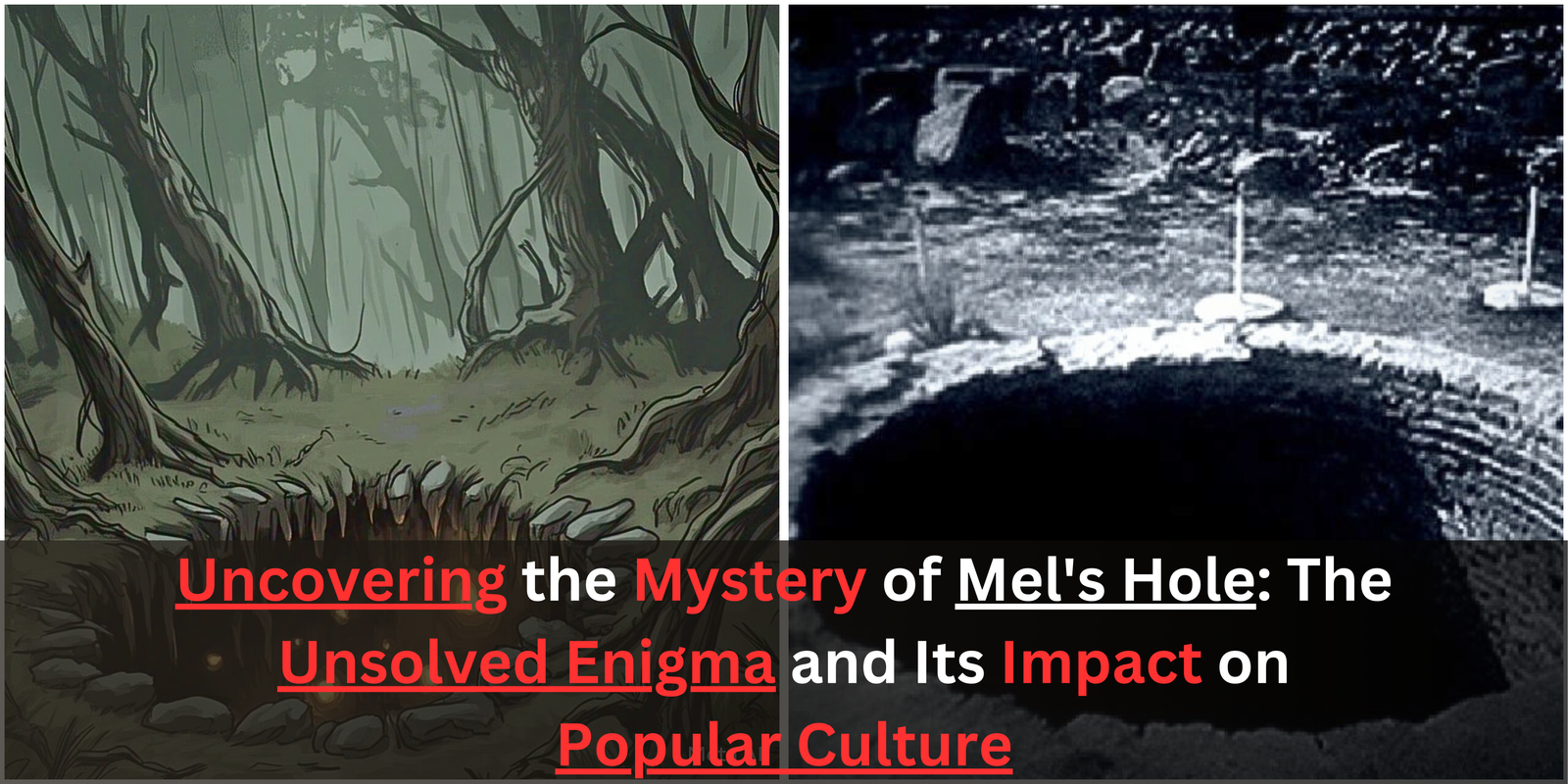


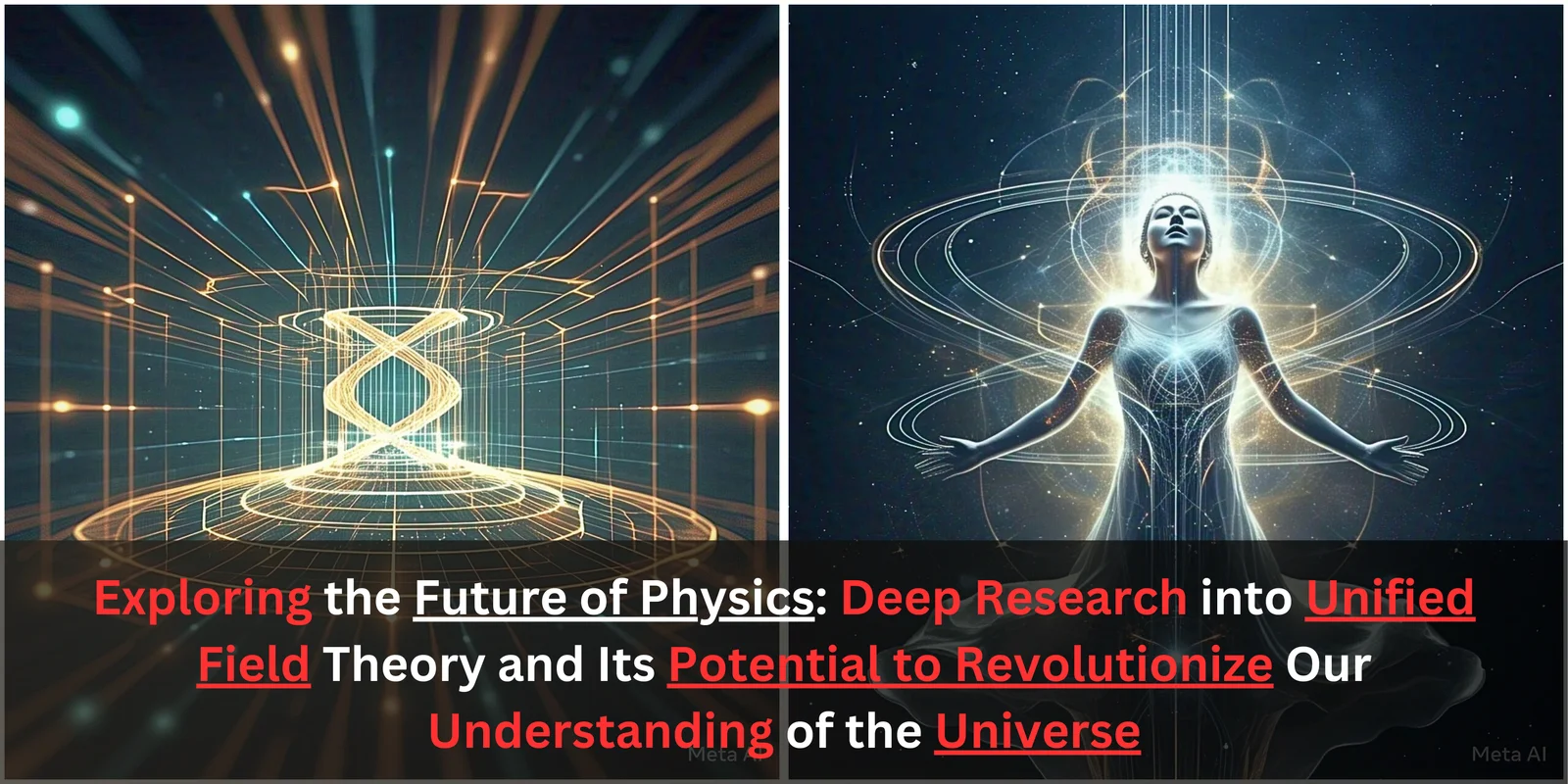
 Let’s imagine, explore, and uncover the mysteries together!
Let’s imagine, explore, and uncover the mysteries together!